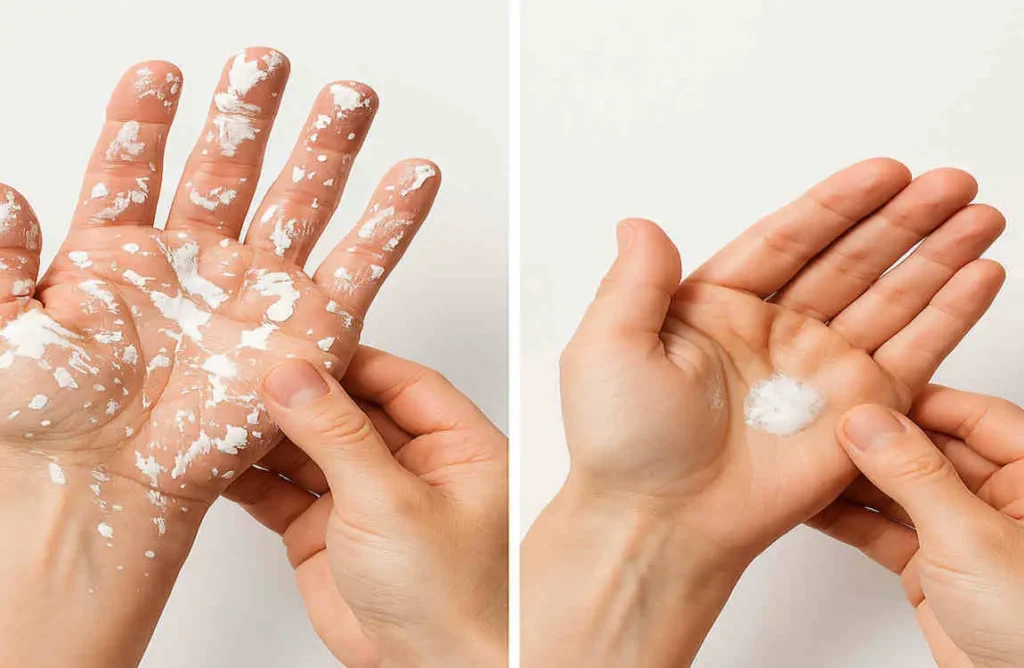Painting your home can be a fun and rewarding project, but it often comes with an inevitable side effect—getting paint on your skin. Whether you’re a seasoned DIY enthusiast or a first-time painter, you’ve likely found yourself wondering, “How to remove house paint from skin?” While it may seem like a minor inconvenience, removing paint safely is crucial to avoid skin irritation, chemical exposure, or even long-term damage.
Understanding House Paint Types and Their Impact on Skin

Before you start scrubbing away at that stubborn paint, it’s essential to understand the type of paint you’re dealing with. Different paints require different removal techniques, and using the wrong method can lead to skin irritation or even worsen the situation.
Types of House Paint
- Oil-Based Paints
- These include enamel and alkyd paints, which are commonly used for trim, doors, and furniture. They are durable but notoriously difficult to remove due to their oil-based composition.
- Water-Based Paints
- Latex and acrylic paints fall into this category. These are popular for walls and ceilings because they’re easy to clean and dry quickly. Water-based paints are generally easier to remove from skin.
- Primers
- Primers can be either oil- or water-based and are used to prepare surfaces for painting. They often contain more potent chemicals, making them trickier to remove.
- Spray Paints
- Spray paints are versatile and quick to apply, but can easily end up on your skin due to their aerosol nature.
Why Paint Type Matters
The type of paint determines the best removal method. For example, water-based paints can often be removed with soap and water, whereas oil-based paints may require solvents such as turpentine or natural oils. Using the wrong method can lead to unnecessary scrubbing, irritation, or exposure to harsh chemicals.
You may also read (how to prevent moles from getting under your house).
Potential Skin Reactions
Paints, especially oil-based ones, can cause:
- Dryness and irritation due to chemical exposure.
- Allergic reactions, particularly if you have sensitive skin.
- Chemical burns can occur in extreme cases, especially with prolonged exposure to strong solvents.
Knowing the type of paint on your skin is the first step in safely removing it. Let’s move on to the specific methods for each type.
Step-by-Step Methods to Remove Paint Based on Paint Type
Removing Water-Based Paints (Latex, Acrylic, Spray)
Water-based paints are the easiest to remove because they dissolve in water. Here’s how to do it:
Step-by-Step Method:
- Wet the Skin
- Start by rinsing the affected area with warm water to loosen the paint.
- Apply Soap
- Use a mild bar soap or dish soap. Rub it generously over the paint-stained area.
- Scrub Gently
- Use your hands, a soft cloth, or a sponge to scrub the area in circular motions. Avoid harsh scrubbing to prevent irritation.
- Rinse and Repeat
- Rinse with warm water and repeat the process if necessary. For stubborn spots, you can use a soft-bristled toothbrush.
Alternative Method:
For dried paint, apply a small amount of rubbing alcohol to a cotton ball and dab it on the stain. Let it sit for a minute before wiping it off.
Pro Tip: If you have sensitive skin, use a moisturising soap and follow up with a hydrating lotion.
Removing Oil-Based Paints (Enamel, Alkyd)
Oil-based paints are more challenging to remove because they don’t dissolve in water. You’ll need a solvent to break them down.
You may also read (sparkling hobs your ultimate home cleaning guide).
Step-by-Step Method:
- Apply Glycerin
- Dab a small amount of glycerin onto the paint to loosen it.
- Use a Solvent
- Apply a small amount of turpentine or paint thinner to a cloth and gently rub the paint. Be cautious not to overuse these chemicals, as they can irritate the skin.
- Wash Thoroughly
- After removing the paint, wash the area with soap and warm water to remove any residue.
- Moisturize
- Apply a moisturiser to replenish your skin’s hydration.
Natural Alternative:
If you prefer a safer option, use olive oil or coconut oil. These natural oils can break down the paint without exposing your skin to harsh chemicals.
Safety Note: Always use solvents in a well-ventilated area and avoid prolonged skin contact.
Removing Primer Paints
Primers often contain more potent chemicals, so extra care is needed. First, identify whether the primer is oil- or water-based, then follow the respective removal method above.
Tip: For stubborn primer stains, try a baking soda paste (made by mixing baking soda with water) as a mild abrasive.
Safe and Natural Home Remedies to Remove Paint from Skin

If you’re looking for gentle, skin-friendly alternatives, natural remedies are a great option. Here are some effective methods:
Olive Oil
Olive oil is excellent for breaking down paint while moisturising your skin. Massage the product onto the paint-stained area and wipe it clean with a cloth.
Coconut Oil and Lemon Oil Mixture
Combine coconut oil with a few drops of lemon oil for a DIY paint remover. The coconut oil softens the paint, while the lemon oil helps lift it off.
Baking Soda Paste
Mix baking soda with water to create a paste. Apply it to the paint and scrub gently. This method works well for dried paint.
Vaseline (Petroleum Jelly)
Apply a thick layer of Vaseline to the paint. Let it sit for a few minutes to soften the paint, then wipe it away.
Why Choose Natural Remedies?
- They’re gentle on the skin.
- They avoid exposure to harsh chemicals.
- They’re eco-friendly and readily available.
Important Safety Tips When Removing Paint from Skin
Removing paint safely isn’t just about the method—it’s also about taking precautions. Here are some essential tips:
- Act Quickly: The sooner you start, the easier it is to remove the paint.
- Avoid Harsh Scrubbing: This can damage your skin and irritate it.
- Use Gloves: Wearing gloves while painting can prevent paint from getting on your skin in the first place.
- Limit Solvent Use: Prolonged exposure to solvents can harm your skin and overall health.
- Moisturise Afterwards: Paint removal can dry out your skin, so be sure tos apply a moisturiser afterwards.
- Seek Medical Advice: If you experience an allergic reaction, chemical burns, or other severe symptoms, consult a doctor immediately.
You may also read (step by step guide to washing bathroom rugs at home).

